Planning a Hiking Trip to Peru
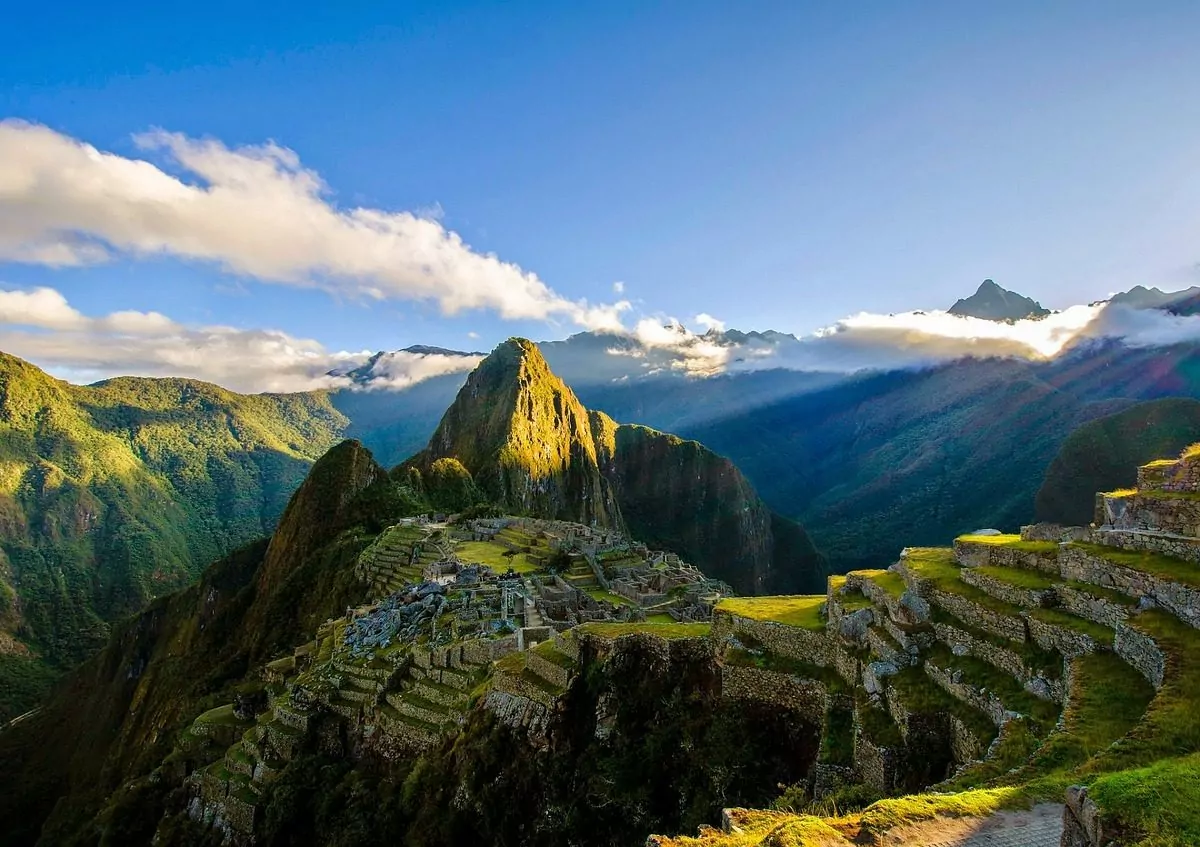
Peru. The land of llamas, Incan ruins, stunning Andean adventures, and unforgettable jungle hikes. From mountain views that will take your breath away to jaw-dropping animal life, the allure of planning a hiking trip to Peru is obvious!
What might be a little more obscure, however, is the plethora of details and minutia of just how to plan that once-in-a-lifetime trip. What do you pack? How do you get around? When should you go? And the most important question, where should you go?
Don’t worry fellow hikers! We’ve done all that research for you, and compiled it right here. The when, the where, and the what you need to hike Peru for a low-stress and sky-high excitement trip.
So let’s get straight down to it, and start with where you should be planning a hiking trip to Peru.
Explore PERU with Expert Guides
Peru Hiking Vacations Overview
WHy a HIKING VACATION?
Are you stuck in an office for 40 hours a week? Do you feel like you spend your whole life indoors? Have you been dreaming of crisp mountain air? Maybe you just need a change of scenery and want a physical challenge. More and more people are choosing to use their vacations for adventure travel. What better way to see a new place and experience new cultures than to trek through rugged wilds and rural communities on a hiking vacation?
You’ve been hearing their names your whole life: Machu Picchu, the Inca Trail, the Andes…etc. These words stir the imagination and inspire wanderlust and adventure. These are the wonders of Peru, and also crown jewels of South America’s natural and cultural legacy, and they are more accessible than you think! Travelers have been trekking in Peru for decades and it’s never been easier to start the greatest adventure of your life than right now.
BACKPACKING OR TREKKING?
Peru’s amazing trails are mostly done via camping. Most guided trips are portered or stock-assisted. The Inca Trail, which requires hiring a tour company, is all porter-assisted and camping-based. However, if you are looking to go off the beaten path, you can embark on self-sufficient backpacking trips.
WHY A HIKING VACATION IN PERU?
Peru is a trekking wonderland with towering, glaciated mountains; intricate and well-preserved ancient ruins; absolutely stunning alpine valleys, lakes, rivers and meadows; unique wildlife; and indigenous cultures still living traditional lifestyles. Peru is home to the most famous archeological site in South America, and one of the most famous in the world: Machu Picchu. A deeply fascinating, mysterious, ancient city that mesmerizes nearly all its visitors, “The Lost City of the Incas” is a place every avid traveler must visit.
What makes a visit to Machu Picchu and the Peruvian city of Cusco truly fantastic for the adventurous traveler though is the maze of hiking trails and routes that wind through the surrounding mountains, allowing stunning combinations of hiking, camping, adventure and cultural tourism. Part of the Andes Mountain Range, the peaks around Machu Picchu tower over 20,000 feet in elevation!
Peru is home to more than just the amazing ruins of the Incan Empire – it is also where the second highest mountain range in the world towers above rain forests and grasslands. The Cordillera Huayhuash specifically is a compact mountain range within the greater Andes Mountains that offers absolutely world-class trekking. Many of its snow-capped peaks soar well over 20,000 feet, creating deep, glacial-carved valleys where rivers plunge out of the mountains.
WHAT MAKES PERU UNIQUE?
Peru is unique for the multitude of landscapes you can visit in a relatively short period of time. The country’s position on the coast creates a coastal desert over 1500 miles long. Inland, the largest rainforest in the world, the Amazon, covers over half the country. Between these two unique ecosystems lies the Andes: a range of mountains so high and mighty that the Incan believed the peaks were gods.
In addition to the abundance of natural wonders, Peru has been home to human populations for over 15,000 years. Many ancient civilizations left behind ruins of once-thriving cities (the most famous being Machu Picchu of course). Dozens of annual festivals honor the traditions of indigenous cultures. When you visit Peru, you’ll dive into a world of ancient wonders, natural beauty, and the perfect blend of traditional and modern culture.
Guided vs Unguided Trekking
When it comes to a planning a big trek in a foreign country, the amount of research required to coordinate the logistics of your experience can be daunting. Unless you are already an experienced hiker, traveler or mountaineer, you will need to purchase the appropriate gear. You will have to get the permits, organize the travel plans, figure out the accommodations, learn enough of the language to get by in remote regions, and make sure you have a plan for what to do if things go wrong. There’s a lot to it!
Hiring a guide allows you to streamline the preparation for the trip and maximize precious vacation time without having to worry about all of the moving parts. Plus, local guides give you get the benefit of learning facts and stories from a local perspective and putting your experience in context.
Going with a trekking company will offer many benefits to the international traveler:
- Guests travel light and free, without having to worry about gear and supplies.
- Logistical and cultural complexities (local travel, permits, food purchasing, reservations…etc.) in other countries are handled for you, so you can relax and focus on enjoying the adventure travel experience.
- Learn from local guides and experts – all Wildland trips include thoroughly vetted and trained, expert, local guides who can impart local knowledge, culture, and friendship.
- Hand-picked, world class hiking itineraries – simply put, going with a company like Wildland Trekking will ensure you are investing your time and money on a trip worth doing. We only offer world-class itineraries.
- Emergency and evacuation systems are in place in case they are needed.
Wildland Trekking Peru Hiking Tours
On the other hand, many people, especially those that have lots of experience backpacking or mountaineering at elevation or already own lots of gear, choose to undertake their trek without a guide. There are many treks which don’t require guides or permits and if you have some GPS, good travel insurance, and a little Spanish under your belt you can probably figure everything out without too much trouble. One of the biggest benefits of going without an outfitter is that you can operate on your own schedule and avoid potentially annoying group dynamics. However, the insight, knowledge and experience that guides bring to the table can be hard to replace. Ultimately, your own experience and comfort level will determine whether you decide to travel with the experts or figure out by yourself.
Machu Picchu and the Inca Trail
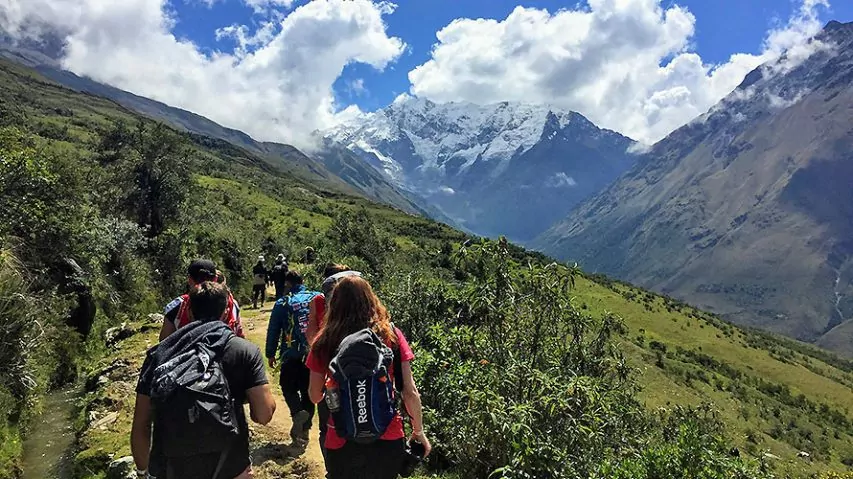
Overview
No planning guide to Peru is complete without mentioning Machu Picchu, so here we are! This ancient Incan citadel sitting high in the Andes Mountains- at almost 8,000ft – is absolutely stunning for nearly every type of traveler out there. Hikers will love the challenge and scenery, history buffs will love the city’s story, the architecturally-minded will be blown away by Incan building techniques, and everyone will have an unforgettable trip!
In terms of hiking types, you have options! The ancient Inca Trail that snakes for miles through the Andes, terminating at Machu Picchu, offers equally breathtaking views and switchbacks, perfect for the multi-day hikers out there. If you prefer a more relaxed approach, however, fear not! There are excellent Inn-Based tours that will show you sections of the Inca Trail and Machu Picchu, amongst other breathtaking sights in the area.
When planning a hiking trip to Peru, it’s always in your best interest to consider crowds. Machu Picchu, unfortunately, tends to be at the top of the list in this department. It is undoubtedly one of the most renowned archeological sites in the world and draws a crowd to fit that title. Does it deserve that title and worldwide adoration? Absolutely! Just be aware that if you’re planning a hiking trip to Peru with seclusion in mind, then this isn’t for you.
Inca Trail Permits and Reservations
If your travel dates are not flexible, then its recommended to make your reservations for the Inca trail well in advance, ideally as soon as you know your dates. Similarly, if you plan on hiking the Inca Trail in the dry (busy) season, booking in advance is recommended. You may be able to make last-minute reservations but keep in mind that your options for dates and tour operators will be limited.
Since 2002, The Inca trail has limited hiker capacity to 500 people per day, regardless of the season. Anyone who wants to hike the Ina Trail MUST acquire a permit in advance. Permits can be obtained through approved tour companies who secure these permits when they are made available. Unlike other hikes to Machu Picchu like the Salkantay and Ancascocha which can be hiked independently, the Inca Trail can only be hiked with an approved tour company.
Because of Peru’s often unpredictable permit systems, it’s a good idea to register before October 1st for hiking trips starting the following year. Wildland Trekking offers a five percent discount to hikers who do so.
Guided Hikes to Machu Picchu
Guided Machu Picchu hiking trips are available through Wildland International, and are an exciting, stress-free, way to do this trip. The tour company handles permits, gear, transportation, meals, and provides a professional guide so you can focus 100% on enjoying your adventure. Read more…
All-inclusive Inca Trail Treks
More Peru Hiking Destinations
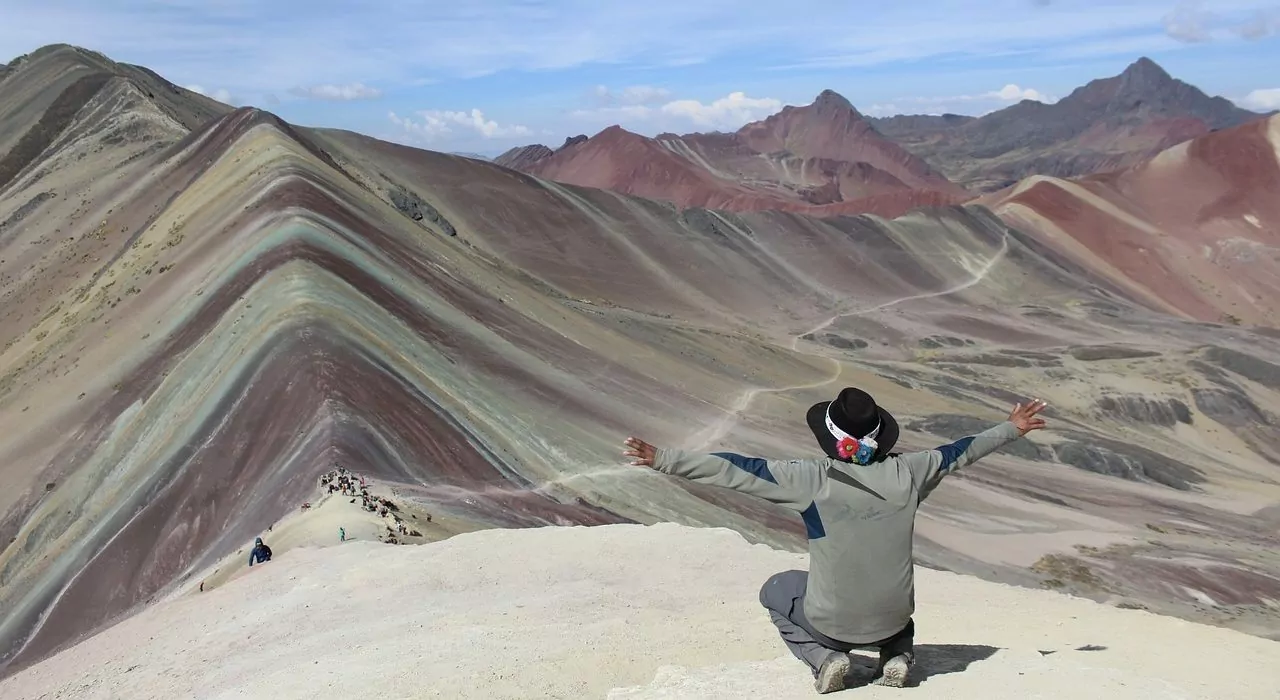
We get it! There’s just so much to see and do in Peru. How about an alternative to the Inca Trail and Cusco area, like a day trip out to Rainbow Mountain? Or see a beautiful slice of the Andes in the Cordillera Huayhuash? Well, let’s take a few minutes to break down these destinations and get you planning a hiking trip to Peru in no time!
Choquequirao
If you still want that incredible opportunity to hike up to ancient Incan ruins, but prefer to avoid the crowds, then Choquequirao is just what you need! This Incan outpost city includes many of the stunning features of Machu Picchu – Incan architecture, temples, and ceremonial creations – but with only a few dozen visitors a day. Now then, there is a reason for this smaller crowd.
To reach Choquequirao, you’re looking at a tough 2-day hike that involves more switchbacks than you can shake a stick at. Is it worth it? Absolutely! The views and history are absolutely incredible. In this case, as you’re planning a hiking trip to Peru, just be prepared for some tough work or to hire a local porter.
Rainbow Mountain
If a day hike with a hot shower and comfortable bed at the end of the day is more your style, then Rainbow Mountain may be just what you need. The colorful sedimentary rock formations on the mountain make for a beautiful sight after a 5.5 mile hike. The sight is also improved by the fabulous Andes mountains as the perfect backdrop. Be aware, however, that this hike starts at about 14,500ft and only gets higher from there. So it will almost certainly feel much harder than expected, and you may experience the side-effects of high altitude hiking.
Guided Rainbow Mountain hiking trips are available, and are an exciting, stress-free, way to do this trip. The tour company handles permits, gear, transportation, meals, and provides a professional guide so you can focus 100% on enjoying your adventure. Read more…
Peruvian Amazonia
Let your inner Indiana Jones out for some air as you pick your way through the awe-inspiring Amazon jungles of Peru! Incredible wildlife including different monkey species, tapirs, sloths, toucans, and the rare Amazon river dolphin may all make an appearance.
If exotic plants and trees are more your focus, then you won’t be disappointed! The vital rubber tree grows in abundance here, along with the striking passion fruit flower, delicious cacao, and beautiful orchids.
As hiking in the jungle quickly veers to miserable during the wet season, we highly recommend aiming for the dry season of May to late September!
Cordillera Huayhuash
As part of the greater Andean Mountain Range, the Cordillera Huayhuash offers incredible hiking opportunities for those not afraid of a little altitude! Glacially-carved valleys house beautiful lakes and rivers, while snowcapped mountains soar to nearly 20,000ft in the background. Most of the best hikes in the area reach about 15,000ft, so acclimatizing for a few days in the nearby town of Huaraz is highly recommended.
Getting to Peru
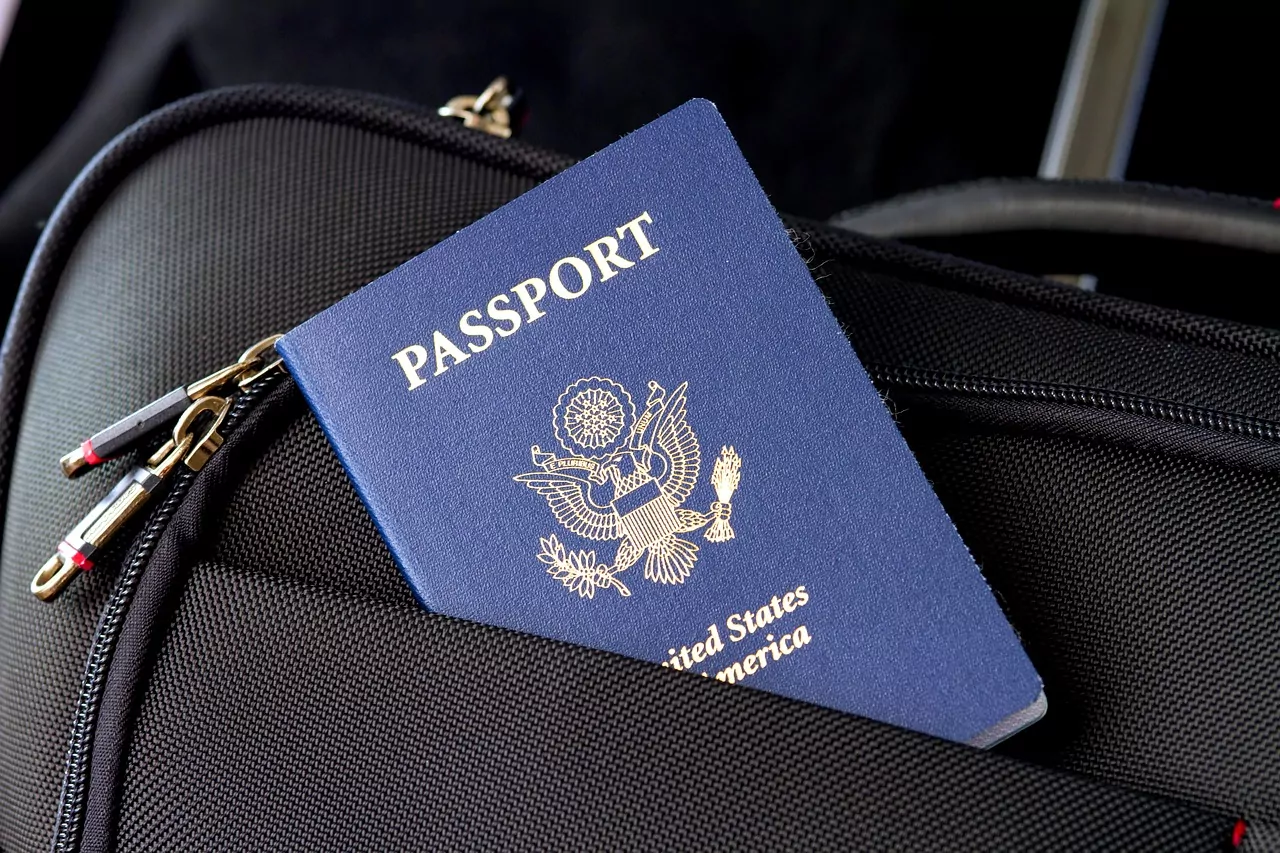
Visa and Entry Requirements
If you’re traveling from the US, getting into Peru to start your adventure is thankfully very straightforward. A US passport, with at least 6 months until its expiration date, is all you need; no application beforehand and no visa fees at the airport make it quick and easy to get your trip underway! We recommend you consult the US State Department’s website to always be on top of changing entry requirements.
Vaccination Requirements
Just about nothing is worse than getting sick on your once-in-a-lifetime trip. Your best defense? Get those vaccinations up to date! The US government suggests that you’re up to date on all standard immunizations for this country including measles, mumps, and chickenpox.
It’s also worthwhile to visit your local doctor, explain where you’re going, and request a pre-emptive prescription for a standard antibiotic. Trying to hike with a nasty stomach bug ranks near the top of the ‘I wish that never happens to me’ list.
Lastly, malaria is present in some parts of Peru – mainly the lowland Amazonian region. If you’re planning on visiting or hiking in this area, definitely consult your doctor on the different malaria preventative medications out there, and their possible side-effects.
Travel Insurance
While not required, we always highly recommend purchasing travel insurance for this simple fact: you just never know. Getting a bug could ruin a trip before it even starts, or an impromptu doctors visit abroad could add a pretty penny to your trip costs.
As an avid international traveler myself, I always have travel insurance, and I’ve used it more than once! Damaged or lost belongings, personal injury, or even trip cancellation are all covered by most providers – such as World Nomads. Wildland Trekking also has policies available that are fine-tuned to fit within our company’s terms and conditions.
Language
English is not widely spoken in Peru outside of the tourist districts in the primary cities – such as Lima and Cusco. If you’re planning a hiking trip to Peru off the beaten path, a basic understanding of Spanish will certainly go a long way!
You’ll also find that almost all prices in Peru, from taxi fares to goods at a market, are negotiable. However, knowing a little Spanish is certainly a prerequisite to any successful haggle! Not to mention actually getting to the correct destination in a taxi or bus!
If you’re starting from scratch, our best recommendation for a simple and free crash course in Spanish is Duolingo. Their program will introduce you to the basics of Spanish from individual words to full sentences. While it won’t make you fluent, it’ll will certainly get your foot in the door!
Preparing for High-Altitude
Unless you’re planning a jungle hike to Peru, you’ll likely experience much higher elevations than normal. Exposure to these high elevations can result in altitude sickness. This can be characterized by the following symptoms:
- Lack of appetite
- Constant headaches
- Tiring very quickly
- Breathlessness with minor exertion
Thankfully, there’s a tried-and-true remedy to these symptoms: rest! Once you arrive at altitude, take a day or two to give your body time to rest and adjust. After acclimatizing for a few days, these symptoms should diminish greatly, if not disappear.
Maps and Guidebooks
It is worth picking up a copy of the Lonely Planet guidebook to Peru for general travel information. These books always provide a great starting point for figuring out basic travel plans and logistics like food and accommodation, plus there are very handy maps of cities and relevant neighborhoods. For more detailed trekking information or those looking to self-guide a trek in the Andes, Trekking Peru by Andy Fine provides a wealth of info and maps to hone in the finer details of your trip. Apps like Gaia, which have maps, satellite imagery, and can update your location using GPS and work offline, are indispensable in the backcountry.
How to Pack for Hiking in Peru
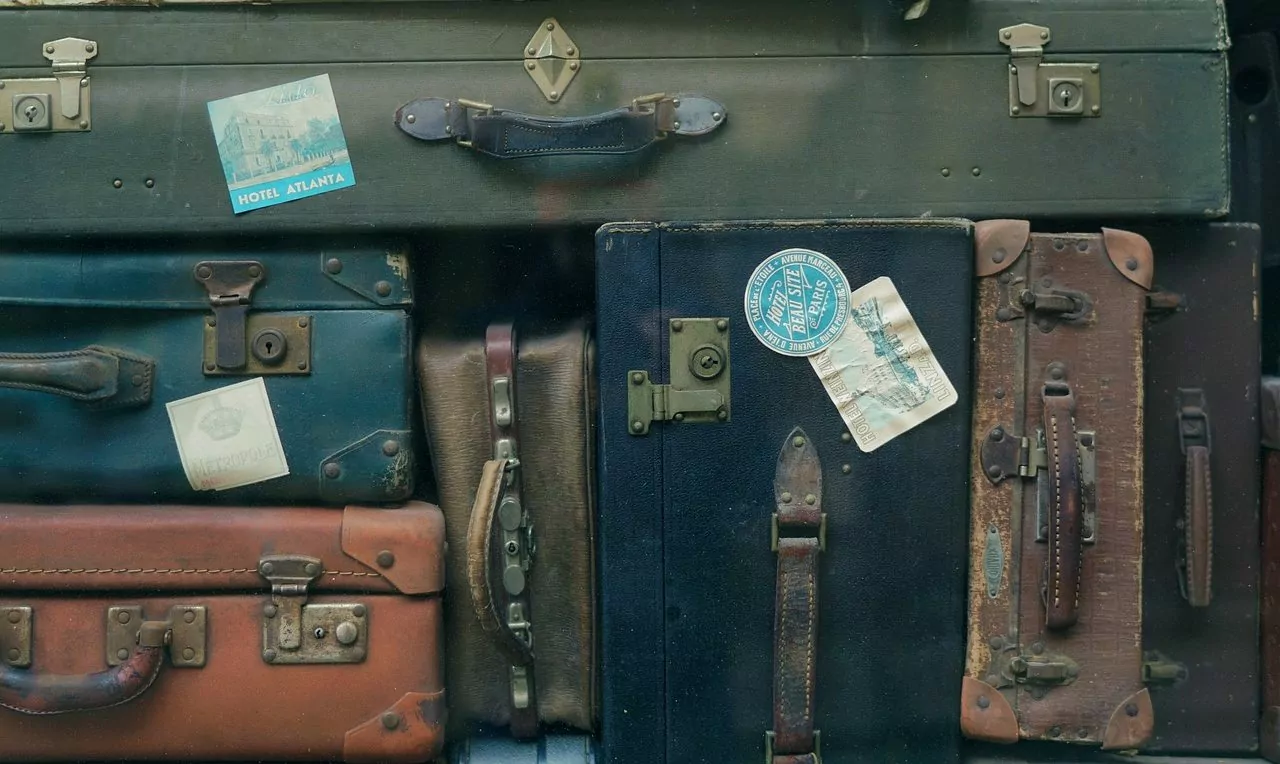
Major headache to international travel? Packing too much, waiting at the check-baggage line, waiting at the baggage carousel, wrestling multiple bags into cars and through doorways, and then knowing you have to do it all over again to get back! Give yourself a break and make sure you do your research on what to bring, and we’ll give you a head-start right here.
To Rent, or Not to Rent?
Nearly every guiding company in Peru – including Wildland International – can provide you with the whole hiking kit-and-caboodle. This includes tents, sleeping bags, packs, and sleeping pads. You can quite literally arrive in Peru with nothing but your hiking clothes and shoes and still hit the trail with a guide – or rent gear independently.
In our opinion, this absolutely the best option for you travelers out there planning a hiking trip to Peru for a week or two. You can pack light for your flights, easily move around the country to do your own sightseeing, get kitted out to hit the trail in no time, and return all the gear after your hike – easy!
If you’re planning a hiking trip to Peru after a few months in Colombia or Chile, however, and maybe you’ll head over to Bolivia for a month afterward, and after that – who knows? Then consider this. The backpacker lifestyle, while incredibly free and liberating, generally involves a little more hiking and tent-living than your average traveler. Because of this, it’s definitely worthwhile to bring a little of your personal gear as you’ll be using it again, and again, and again. Plus, you won’t have to pay for rentals with each use.
Cash Over Credit
The vast majority of eateries, venders, and bus terminals are cash only institutions, or need to charge an additional fee to process a credit card. While there are banks and currency exchange storefronts in-country, you can generally get better rates and dodge additional fees if you simply pull a few Peruvian Soles at your bank in the US before leaving.
Bug Repellent
Just as you can expect bugs with almost any hiking trip in the US, the same holds true in Peru. Up in the highlands of the Machu Picchu and Sacred Valley area, you can certainly expect mosquitos in the mornings and evenings, with a smattering of sandflies – or midges – during the day. These midges pack quite a wallop for being so small, and will leave an itchy bite that can last for weeks!
If you opt for a jungle trek, then we recommend you mentally prepare for hordes of mosquitoes. Most tour operators provide mosquito nets with every trip, and you can supplement with your own bug repellent.
The upshot, friends: bring bug repellent! 50% Deet is very effective in most settings and it is my personal choice. If, however, you prefer to use a natural bug repellent, lemon eucalyptus oil has an excellent reputation as an effective deterrent on those little blood-suckers.
Sunscreen
Sunscreen is definitely a must-have for most Peruvian hiking adventures! The region surrounding Machu Picchu sits at about 10,000ft elevation, which means less atmosphere between you and the sun. The upshot: it’s easy to burn! So bring your favorite sunscreen and be aware that purchasing sunscreen in-country can be surprisingly expensive compared to other items.
Hiking Clothing
When picking out your hiking wardrobe, it’s best to consider the following points. If you’re visiting in Peru’s winter, it’ll likely be sunny and hot. If you’re visiting during their summer, you can expect humid heat with a fair amount of rain. In both cases, you are almost certainly guaranteed some annoying bug action!
Therefore, your best hiking clothing will feature lightweight long-sleeve and long-pants that are breathable and moisture-wicking. These will help protect you from sun and bugs alike, but also keep you cooler on hot days and dry quickly if you get caught in the rain.
Consult In-Country Guides
But what better resource for packing than a comprehensive list prepared by in-country guides? Well, we have that exact detailed Peru packing list all ready for you as part of each trip PDF packet! If you book a trip through Wildland Trekking International, you’ll also receive a detailed trip packet that will include a trip-specific packing list.
All-inclusive Hiking Adventures
Best Time to Visit Peru
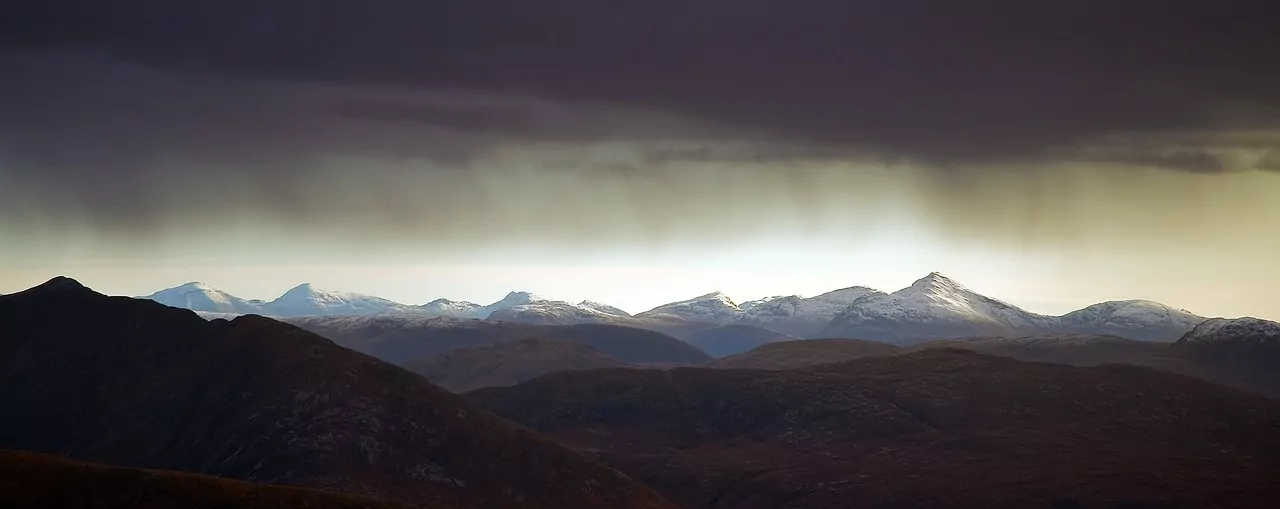
Like everywhere else in the world, Peru has very distinct seasons that can drastically affect your trip. Therefore, for the absolute best Peru hiking trip, we highly recommend you take the time to plan out what season to visit. For checking the weather in-country, we’ve always found Weather Underground to provide reasonably accurate and up to date information.
The Dry Season – May to Late September
This is Peru’s winter, and traditionally the driest and most pleasant time of the year. Consequently, this is the most popular time to visit the country. You can certainly expect to deal with crowds at airports, cities, and the most popular hiking destinations.
The Wet Season – November to March
If fewer crowds and greener scenery appeals to you, then November to March may be worth considering. Take note, however, that this greenery is due to the marked increase in rainfall during this time, which can definitely make for a slog of a hike. January and February tend to be the wettest of these months, but you can reap the benefits of cheaper airfares and hotel rates if you brave the rain!
The Shoulders – October and April
These two transition months are marked by notoriously unpredictable weather. Maybe it will be clear blue skies, or maybe rain clouds for days on end. But, the tourist season is either ramping up or just winding down. This may make these months the perfect time to visit if you don’t mind a shower here and there on your hike!
The Temperatures
Regardless of winter or summer, the temperatures in Peru generally stay very stable within its distinct regions. The highlands near Machu Picchu will often hover around the 70s F, while the jungle will see temperatures from the high 80s to low 90s F.
Getting To and From Your Hike
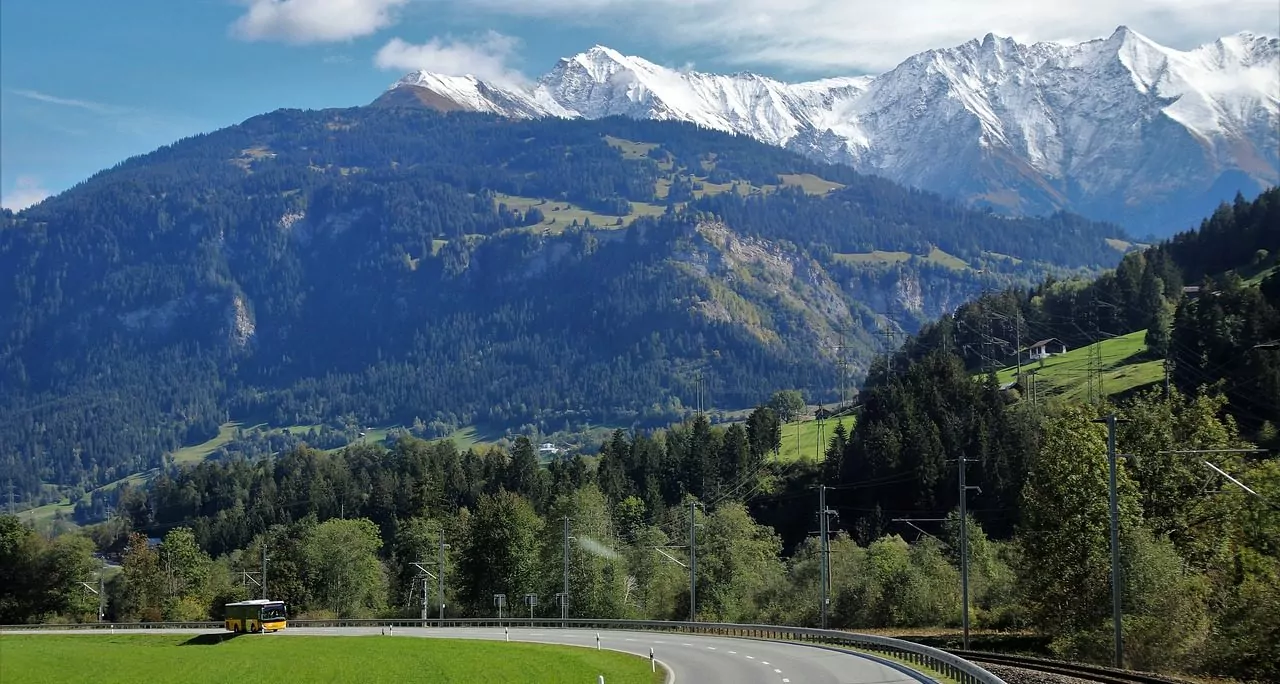
In most cases, especially when planning a hiking trip to Peru unguided, you’ll need some form of transportation. Let’s therefore take just a few minutes to cover the essentials of getting to and from your hike.
Taxis
Taxis in Peru are absolutely a dime-a-dozen. Nearly every street you visit will feature at least a few taxis all honking or flashing their lights to get your attention. They run everywhere within the main cities and can also take you to nearby villages or trailheads if you wish. These qualities easily make them one of the best options for getting around easily.
However, always use licensed taxis that are marked with an official taxi operator name with registration numbers on the doors. You will often see gentlemen trying to pack you into unmarked cars while saying that they’re a taxi. For safety’s sake these unmarked cars should be avoided.
Colectivos and Busses
For jumping from one city to another, colectivos (minivan buses) and full-sized buses are your most economical choice. They’re direct, they’re cheap, and you can tell the driver exactly where you want to get off. Assuming you have a little bit of Spanish up your sleeve.
Each city will have a major bus terminal in which you can purchase tickets for a bus that day, or a few days in advance. Most smaller villages, however, rely on colectivos that will either take you to the main highway, where you can flag down a bus, or take you all the way to your final destination.
Private Cars
Major cities that see a fair amount of tourist traffic – think Cusco – will have private car services for hire. These will allow to you to schedule exact pick-up times and drop-off locations at your convenience. While certainly a more expensive option, private cars do provide some peace of mind for getting around in a foreign country. Especially one where the transportation system is a bit of an adventure on its own.
Transportation Included in Guided Hikes
Wouldn’t it be convenient if your guide would pick you up at the airport and drop you off afterward? Cutting out all the stress of arranging your own transportation in one fell swoop. Well, we do! A Wildland International representative meets you at the Cusco airport for all our Machu Picchu trips, and drops you off afterward for a completely stress-free experience!
There you go, hiking friends! We’ve covered the primary points of planning a hiking trip to Peru. From destinations, to what to bring, to how to prepare, to how to get around, you now have all the information you need for an unforgettable trip! So what are you waiting for? Get planning, get packing, start your adventure, and remember that Wildland International is always ready to provide a once-in-a-lifetime hiking adventure to Peru!
Guided Trips with Transportation PRovided
As the world’s premier hiking and trekking company, Wildland International believes in connecting people to fantastic environments in amazing ways. Peru offers an array of incredible hiking and trekking experiences. Wildland International provides 10 different single and multi-day hiking adventures to several unique Peruvian landscapes. Read more about our Peru hiking trips.
To learn more about our guided backpacking trips and our award-winning hiking vacations, please visit our website or connect with one of our Adventure Consultants: 800- 715-HIKE
Trekking Safety
Overview
While trekking is generally a low-risk activity, accidents do happen and even small mishaps can have major consequences when you’re in remote locations. Being informed and prepared can make a huge difference in the quality of your experience, especially if things take a turn for the worse. Here are some helpful tips and considerations to help you plan a safe trek.
- Get travel insurance! This is a must for any international trip, especially if you’re venturing into areas without ready access to roads or hospitals. Travel insurance plans are relatively cheap and can cover almost everything from stolen items to repatriation of your remains.
- Check the weather. Closely monitoring the weather before and during your trip is critical for comfort and safety. Storms at high elevation can be deadly and conditions change fast in the mountains.
- Give yourself time to acclimatize. Read about Acute Mountain Sickness and prepare to give your body ample rest and hydration while you acclimatize to mountain towns and as you reach higher elevations during your trek.
- Don’t hike alone. If you’re a solo traveler and have trouble finding a buddy, guided treks are a great way to join a group and have some expertise and support in case of emergency.
- Always bring a small first aid kit and basic repair kit. Double check that you have the essential 10 gear items before you go into the backcountry. Always familiarize yourself with your gear before your trip.
- Always bring sufficient water or bring a water purification so you can either filter or treat drinking water. It is necessary to stay hydrated at elevation and you need to be prepared to drink from dubious water sources should the need arise.
- Keep track of your valuables and other belongings. Always keep important items like your wallet, passport, and phone on you. If storing your baggage anywhere, ask for a receipt and take photos of your bags.
- Always line up an emergency contact. It is always a good idea to let someone know where you’re going and when you’ll be back. If you’re self-guiding, give your emergency contact your full itinerary and make sure you know how to contact emergency services in the area where you’ll be trekking.
- Be careful! Watch your step and be aware of your surroundings to avoid accidents and injuries.
Altitude Sickness
Most people feel the altitude when they arrive in high elevation cities like Cusco. Acute Mountain Sickness (AMS) is very common and can be fatal if ignored. For some, symptoms may not be more than shortness of breath when exerting themselves. Others may experience headache, nausea and fainting. The good news is that most people who take the time to acclimatize and listen to their body can easily mitigate the effects of AMS. Learn more about AMS and how to thrive at elevation in this blog.
Travel Insurance
There are way too many things that can go wrong in life to not have travel insurance when traveling abroad. Travel insurance plans can cover stolen items, lost bags, missed flights, and, most importantly, emergency scenarios. Ideally you won’t use it at all but the peace of mind from being covered is worth it. For a trekking trip in the mountains you’ll need a plan that covers high elevation hiking, camping, etc. and medical evacuations. Wildland Trekking has policies available that are fine-tuned to fit within our company’s terms and conditions.
Responsible Trekking and Cultural Considerations
Minimize your Impact
Our world is incredibly precious. It is super important that we minimize our impacts on any natural environment, especially in places which receive millions of visitors. It is good to familiarize yourself with the Leave No Trace principles. Respect Pachamama!
- When visiting natural environments and sites with cultural significance it is important to dispose of your human waste in designated areas.
- Try and minimize your consumption of single-use plastics like water bottles and plastic bags Trash and recycling services may be limited in rural areas.
- Minimize off-trail travel and avoid damaging the fragile alpine vegetation.
- Pack out your garbage (and any you find along the way if you have room). Where there are people there is garbage, it’s a fact of life. Please do your part and do not litter.
- Keep your camp at least 200 ft from water sources to avoid contaminating precious drinking water.
- Archeological sites are irreplaceable cultural resources and should be respected. Never write or make engravings or any other marks on any rocks or structures, man-made or natural.
Ethical Treatment of Porters
The nature of tourism itself is to impact a place. Besides the physical impact of increased visitation, there is an entire industry dedicated to catering to tourists and creating infrastructure to accommodate the needs of the industry. In Peru, porters make are a significant part of the travel industry.
While horses, mules, or llamas may be used on other trails, the Inca Trail only uses human porters to minimize impact on the popular route. All camping gear, fuel and food is carried by the porters. Hiring porters is good thing- it provides work opportunities for able bodies locals and stimulates the local economy. However, it is important to make sure that the porters are taken care of by the company they work for. How you can help:
- Do some research before you book your trek. Book from reputable outfitters that mention porter welfare or treatment on their website. Customer reviews can also be helpful for figuring out how a company treats its staff.
- Help facilitate healthy relationship between customers and porters. Be kind! Learn some Quechua words and interact with your support staff. The human connections you form with your team will be as rewarding as the trek itself.
- Thanks, both verbal and monetary, are always appreciated.
- If the porters on your trip seem like they’re not being treated well, complain to the guide, complain to the company, and leave honest reviews online.
Cultural Considerations
As is the case everywhere, race and class factor into the social structure in Peru. People with indigenous heritage were persecuted by the Spanish for hundreds of years. Cusco, as well many rural towns and villages across the Peruvian Andes, is mostly Quechua. Many Peruvians learn Spanish as a second language and English after that. Thus, basic Spanish skills will go farther than English in rural communities, although most guides, operators and other workers in the travel industry will speak English. Here are a few tips to try and leave the bond between the travelers and local communities better than you found it.
- Learn some words in the local tongue. Connect with the locals!
- Ask for permission before taking photos of the locals, especially those wearing traditional clothes and minding their own business.
- Be mindful when haggling prices. When vendors mark-up their prices for tourists it is an attempt at creating a fair-trade standard for exchanging goods and services. Help stimulate local economy!




